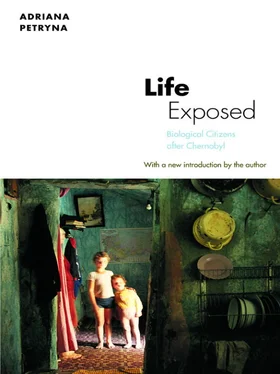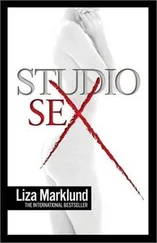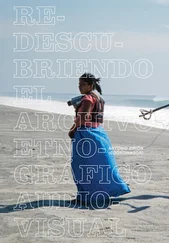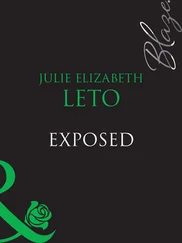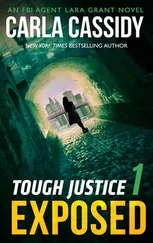Christopher, Warren, 8
citizenship: benefits of sickness vs. responsibility/rights of healthy, 85; birthright and traditional concept of, 7; liberty rights vs. rights of, 223n.30; principles of classical, 23; social reconstruction of health and, 218–20. See also biological citizenship
civil society: Chernobyl aftermath to understand postsocialist, 25–27; negotiating “safe living” social contract basis of, 25
“claims rights” struggle, 23
Class 16 (International Classification of Diseases), 32
classical citizenship principles, 23
cleanup workers. See Zone workers
clinical radiological division. See the Clinic (Radiation Research Center)
the Clinic (Radiation Research Center): biological adaptation perspective and research of, 162–63; “Brain Surveyor” experiment in, 181–90; doctor-patient relations in, 174–76; four categories of patients in, 154, 155; in utero research in the, 164–65, 184–90, 238n.36; lesional and psychosocial approach adapted by, 156–61; new sociality trapping patients of, 165–74; physical description of, 154; political contingencies/interests in radiation research by, 162–63; radiation pathogenesis of organic personality development research at, 163–64; radiation research conducted by, 18–20, 151–54; self-vigilance behavior of patients at, 155–56
Clinic No. 6 (Institute of Biophysics), 39–41, 45
Clinic’s Division of Nervous Pathologies, 19
Communist Party of Ukraine archives, 96
compensation ( kompensatsiia ): “bicycle” metaphor for, 105; broader meaning in former Soviet Union, 219–20; Chernobyl “tie” (document) entitlement to, 19, 111, 112, 129, 216; corruption and inequalities of, 122–23, 142–43; development into financial resource, 84; to disabled vs. sufferer, 18, 84–85; used as financial resource, 94–101; “inheritance” of, 110; mothers’ complaints on sufferers criteria and, 78; paid to Three Mile Island/hibakusha victims, 105, 232n.29; role of scientific knowledge/political strategies in, 16; scope/benefits included in , 230n.5; shifting moral fabric measured by process of, 113–14; social protection acts providing pensions and, 24–25, 83–84, 103; Soviet entitlement legacy and, 99; Soviet laws governing worker disability, 231n.20; transition into accumulation, 92–101, 105–7
“The Concept of Inhabitation” (1991, Ukraine), 99
contaminated territories: disability among sufferers in, 102 fig; incentives for relocation to, 222n.13; population resettlement in Ukraine from, 82, 88, 99; travels through Zhytomyr region, 82–83. See also Exclusion Zone
corruption: access to disability claims and, 128–29, 142–43; energy sector, 5
cost-effectiveness models, 115–16, 117–18
Das, Veena, 12, 223n.21
data collection issues, 16
death rates: experience of Chernobyl, 94; independent records of Chernobyl workers’, 146–47; official vs. local tally of Chernobyl, 2, 13; state statistics on birth and, 234n.21
“decompensation” mode, 138
Demeshko, Ihor, 102, 103, 104, 106, 107, 108, 109, 110, 111, 113, 137–38, 156, 212
deterministic effects, 10, 100
diapazon (biological activity range), 163
disability claims: changing doctor-patient relations in context of, 174–76; confusing personal/intrafamilial processes of, 90–92; corruption/bribery and, 128–29, 142–43; denied due to alcoholism, 112; drafting of new table of illnesses for, 103; ethical compromises in assessment of, 105–7; granted through blat , 128–29; impact of Soviet hidden truth legacy on, 176–81; impact of uncertain economy on, 92–94; medical-labor committees to handle, 102–7; new sociality of, 165–74; number of processed, 113; processing of, 107–12. See also sufferers ( poterpili ) categories
disability groups. See fondy (funds)
disability status: access to Western goods through, 145–46; among Chernobyl sufferers, 102 fig; compensation graded according to category of, 84–85; economic benefits of, 85, 92–101, 105–7; “epidemic” of post-Soviet Ukraine, 84; establishing biological negativity for, 185–88; impact on male identity of, 20, 191–201; Ivanivna’s narrative on attaining, 91–92; labor capacity loss criteria for, 34–35; as product of social definitions/restrictions, 232n.31; progress in obtaining, 19. See also sick role sociality
disabled: average pension benefits to, 19; compensation to sufferer vs., 18; Ekspertiza evaluation of, 19; shifting moral fabric measured by fate of, 113–14; Ukraine social protection acts and, 24–25. See also Chernobyl accident patients; Chernobyl health effects; sufferers ( poterpili )
disease transformation from illness, 153–54. See also illness
Division of Nervous Pathologies (Radiation Research Center), 34, 151, 156
Division of Nuclear Safety (IAEA), 54
Dmytro, 34–35, 43, 224n.1
DNA: investigation of damage/repair of, 57; repair after irradiation of, 56
Docta Ignorantia (Nicholas of Cusa), 28
dosimetric passports, 83
Dragan, Nina, 121, 129, 130, 155, 171–72, 181
Dubinin, 93–94, 95–96
Dubova, Rita, 121–24, 125–26, 128–30, 138, 233n.7
“E” evacuee ( evakuyovanni ), 154. See also resettlement
Ekspertiza. See Medical-Labor Expert Commission ( Ekspertiza )
ekzotyka (exotica), 77
Elena, 182, 183, 185, 188–89, 190
environment: Lysenkoism as attempted control over, 119–20, 233n.5; two meanings of, 119; U.S. liability industry built around, 115
environmental measurements: disagreement regarding biological, 35–36; newly established threshold radiation dose, 41, 43, 120; Soviet liability limited by set biological, 35, 120–21. See also biological risk standards
epidemiological division (Radiation Research Center), 152
Eshevsky, 175–76
ethnography: challenges of bioethics to, 20; as providing accounting of life contingencies, 220; research methods used in, 6
Exclusion Zone: clinical monitoring of exposed population in, 101; dosimetric control around edges of, 98–99; economic incentives to work in, 3; lack of radiation safety norms in, 3; location of, 4; resources available to workers in, 93–94; role in capitalist transition, 93; Soviet vs. Ukraine management of, 11, 12, 13–14, 82, 99–100; statistics on disease prevalence among children of, 184; word of Chernobyl explosion passed throughout, 74–75. See also Chernobyl explosion (1986); contaminated territories
experimental systems, 25–27
famine, 23, 64
Farmer, Paul, 15
“father-patients”, 173–74
Fedorovych, Volodymyr, 133–34, 136, 140
Fimova, Sveta, 128, 129
First Five-Year Plan, 224n.31
FISH (fluorescence in situ hybridization), 59, 129, 228n.38
fondy (funds): boom of, 18; mediation between sufferers and institutions by, 54, 55, 104, 135
food supplies: provided by hospital for Chernobyl sufferers, 144; radiation content of, 85–86; “radioprotectors” added to, 83; special stores to provide clean, 101
Foucault, Michel, 13, 222n.18, 233n.5
Freud, Sigmund, 176, 177, 235n.5, 237n.24
Friend of the Deceased (film), 208–9
Gale, Robert, 44, 45, 46–47, 48, 60
“genetic protection” program (proposed), 147
genocide accusations, 23
rhGM-CSF (hematopoietic growth factors), 46, 47
Gonzalez, A. J., 54
Gorbachev, Mikhail, 1, 45
Graham, Loren, 119
Guskova, Angelina, 2, 39–41, 45, 46, 48, 60, 103, 111, 120, 126, 160, 168, 183
half-life of radiation, 116 t , 233n.1
Halia: abused by Anton, 195, 203, 210–12; comments on Anton’s despair by, 202; dinners as part of disability claim efforts, 199, 205–6; introduction to Anton and, 191–94; leaves Anton, 212–14; pre-Chernobyl life of, 197–98; reconciliation/acceptance by, 200, 201, 208
Читать дальше
